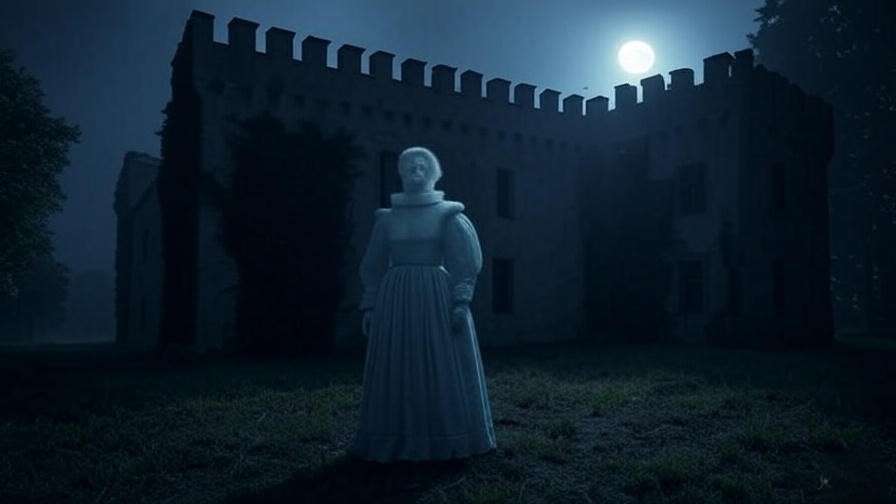What happens when a prince’s quest for revenge collides with a kingdom teetering on the edge of chaos? In Hamlet Act 4, Shakespeare masterfully shifts the gears of his iconic tragedy, transforming introspection into action and setting the stage for an inevitable downfall. This Hamlet Act 4 summary dives deep into the pivotal moments, character arcs, and themes that make this act a turning point in the play. Whether you’re a student grappling with Shakespeare’s dense text, an educator seeking fresh insights, or a literature enthusiast exploring the Danish prince’s world, this comprehensive guide offers a detailed breakdown, expert analysis, and practical study tips to enhance your understanding of Hamlet Act 4. Expect a rich exploration of betrayal, madness, and moral decay, all woven with historical context and modern relevance to bring Shakespeare’s genius to life.
Overview of Hamlet Act 4
Setting the Stage for Act 4
To fully grasp the significance of Hamlet Act 4, we must first revisit the whirlwind of events in Acts 1–3. The play opens with the ghost of King Hamlet revealing his murder by Claudius, igniting Prince Hamlet’s quest for vengeance. By Act 3, Hamlet’s feigned madness has escalated tensions, culminating in the accidental killing of Polonius, the king’s advisor. This act of violence sends shockwaves through the Danish court, setting Act 4 in motion as a critical juncture where characters confront the consequences of their actions. The court becomes a pressure cooker of deceit, with Claudius tightening his grip on power, Hamlet teetering between sanity and madness, and secondary characters like Ophelia and Laertes drawn into the tragedy’s orbit.
Act 4 serves as the narrative bridge between the rising action of earlier acts and the catastrophic climax in Act 5. It’s where Shakespeare accelerates the pace, weaving together political intrigue, personal betrayals, and existential reflections. For students and readers, understanding Act 4 is essential to unlocking the play’s deeper meanings, as it marks the moment when Hamlet’s internal struggle begins to manifest in decisive, albeit tragic, actions.
Key Themes Introduced in Act 4
Act 4 deepens Hamlet’s exploration of universal themes that resonate across centuries. Betrayal permeates the act, from Claudius’s secret plot to kill Hamlet to Rosencrantz and Guildenstern’s disloyalty to their childhood friend. Vengeance drives the narrative, with both Hamlet and Laertes grappling with their desires to right personal wrongs. Moral decay is evident in the crumbling relationships and ethical compromises, while political intrigue underscores Claudius’s desperate attempts to maintain control. These themes not only propel the plot but also invite readers to reflect on timeless questions about loyalty, justice, and the human condition.
As noted by Shakespearean scholar Harold Bloom, Act 4 is where “Hamlet’s intellectual torment begins to yield to action, however flawed or fraught.” This shift makes the act a critical lens for analyzing the play’s psychological and philosophical depth, appealing to both academic readers and casual enthusiasts.
Scene-by-Scene Summary of Hamlet Act 4
Scene 1: Gertrude’s Report and Claudius’s Response
Act 4 opens with Queen Gertrude informing Claudius of Polonius’s death at Hamlet’s hands. Her distress is palpable as she describes Hamlet’s erratic behavior, signaling the growing rift between mother and son. Claudius, ever the calculating politician, responds with a mix of concern and opportunism. He recognizes the threat Hamlet poses and begins orchestrating a plan to neutralize him. This scene underscores the theme of secrecy, as Claudius conceals his true intentions while projecting a facade of royal composure.
For readers, this moment highlights Claudius’s dual nature as both a caring stepfather and a ruthless manipulator. His decision to send Hamlet to England sets the stage for the act’s escalating tension, making it a pivotal scene for understanding the power dynamics in Elsinore.
Scene 2: Hamlet’s Confrontation with Rosencrantz and Guildenstern
In Scene 2, Hamlet faces Rosencrantz and Guildenstern, who are tasked with escorting him to England. His sharp-witted dialogue reveals his awareness of their betrayal, as he likens himself to a “sponge” soaking up the king’s favors. This brief but intense exchange showcases Hamlet’s intellectual prowess and his growing isolation, as even his former friends align with Claudius.
This scene is a masterclass in Shakespeare’s use of verbal sparring to reveal character. Hamlet’s cryptic responses (“I am glad of it: a knavish speech sleeps in a foolish ear”) underscore his ability to outmaneuver his opponents, even as he’s cornered. For students, analyzing this dialogue offers a chance to explore Hamlet’s strategic use of language as a weapon.
Scene 3: Claudius’s Plan and Hamlet’s Banishment
Scene 3 reveals Claudius’s sinister plan: he sends Hamlet to England with sealed orders for his execution. Hamlet, however, remains defiant, engaging Claudius in a battle of wits that exposes the king’s unease. Claudius’s line, “Do it, England,” betrays his desperation to eliminate the prince, while Hamlet’s cryptic references to Polonius’s body (“Not where he eats, but where he is eaten”) highlight his sardonic awareness of the court’s corruption.
This scene is crucial for understanding Claudius’s growing paranoia and Hamlet’s precarious position. It also sets up the dramatic irony of Hamlet’s eventual escape, keeping readers on edge as the stakes rise.
Scene 4: Fortinbras and Hamlet’s Reflection
One of the most introspective moments in Act 4 occurs in Scene 4, where Hamlet encounters the Norwegian army led by Fortinbras. Observing their march to fight for a seemingly trivial piece of land, Hamlet delivers a powerful soliloquy: “How all occasions do inform against me / And spur my dull revenge!” This reflection contrasts Fortinbras’s decisive action with Hamlet’s paralyzing indecision, prompting him to vow greater resolve.
Study Tip: When analyzing this soliloquy for essays, focus on Hamlet’s self-criticism and the theme of action versus inaction. Break down key lines like “What is a man / If his chief good and market of his time / Be but to sleep and feed?” to explore Hamlet’s existential crisis. This approach can strengthen literary analyses and exam responses.
Scene 5: Ophelia’s Madness and Laertes’s Return
Scene 5 is a heart-wrenching turning point, as Ophelia’s descent into madness becomes fully apparent. Her fragmented songs and cryptic references to flowers symbolize her fractured psyche, a result of Polonius’s death and Hamlet’s rejection. Meanwhile, Laertes storms into Elsinore, enraged by his father’s murder and demanding justice. Claudius deftly manipulates Laertes, redirecting his anger toward Hamlet and forging an alliance.
This scene is rich with emotional and thematic weight. Ophelia’s madness serves as a foil to Hamlet’s feigned insanity, while Laertes’s impulsive rage contrasts with Hamlet’s calculated restraint. The interplay of grief and vengeance makes this scene a standout for literary analysis, offering insights into Shakespeare’s portrayal of human suffering.
Scene 6: Hamlet’s Letter and Return
In Scene 6, a letter from Hamlet reveals his miraculous escape from the ship to England. He describes how pirates attacked the vessel, allowing him to return to Denmark. This brief scene marks a shift in Hamlet’s agency, as he takes control of his fate for the first time. His return sets the stage for the climactic confrontation in Act 5, heightening anticipation for readers.
This moment underscores Hamlet’s resourcefulness and resilience, qualities that emerge as he moves closer to his tragic destiny. For educators, this scene is an excellent opportunity to discuss narrative pacing and Shakespeare’s use of offstage action to build suspense.
Scene 7: Claudius and Laertes’s Conspiracy
The final scene of Act 4 sees Claudius and Laertes plotting Hamlet’s death through a rigged fencing match. Claudius proposes poisoning the tip of Laertes’s sword and preparing a poisoned drink as a backup. Laertes, consumed by vengeance, agrees, revealing his moral descent. The scene ends with news of Ophelia’s death, adding a layer of tragedy to the act’s close.
This conspiracy highlights Claudius’s Machiavellian cunning, as seen in his chilling line: “When in your motion you are hot and dry… / He, being remiss, / Most generous, and free from all contriving, / Will not peruse the foils.” For readers, this moment crystallizes the moral decay at Elsinore’s core, setting up the tragic inevitability of Act 5.
Key Character Developments in Act 4
Hamlet’s Transformation
Act 4 marks a turning point in Hamlet’s character arc. His soliloquy in Scene 4 reveals a shift from paralyzing indecision to a newfound resolve, as he declares, “O, from this time forth, / My thoughts be bloody, or be nothing worth!” This moment reflects his growing acceptance of his role as an avenger, even as he grapples with the moral implications of violence. For students, tracing Hamlet’s evolution in Act 4 provides a foundation for understanding his actions in the play’s climax.
Claudius’s Desperation
Claudius emerges as a fully realized villain in Act 4, his actions driven by fear of losing power. His decision to order Hamlet’s execution and manipulate Laertes reveals a ruler unraveling under pressure. Literary critic Stephen Greenblatt notes that Claudius’s “political acumen is matched only by his moral bankruptcy,” a dynamic that Act 4 vividly illustrates. This characterization makes Claudius a compelling figure for analysis, as his flaws mirror Hamlet’s own struggles with morality.
Ophelia’s Tragic Decline
Ophelia’s descent into madness is one of Act 4’s most poignant elements. Her songs, laden with references to flowers and betrayal, reflect the patriarchal pressures and personal losses that shatter her. As a foil to Hamlet, her genuine madness contrasts with his strategic pretense, highlighting the gendered dimensions of grief and agency. For readers, Ophelia’s arc invites discussion of Shakespeare’s portrayal of women and the psychological toll of tragedy.
Laertes as a Foil to Hamlet
Laertes’s impulsive return and alliance with Claudius position him as a foil to Hamlet. While Hamlet hesitates, Laertes acts swiftly, driven by raw emotion. This contrast, as critic A.C. Bradley observes, “illuminates Hamlet’s complexity by juxtaposing it with Laertes’s simplicity.” Analyzing their differences offers valuable insights into Shakespeare’s exploration of revenge and morality, making Act 4 a rich text for comparative studies.
Themes and Symbolism in Act 4
Betrayal and Deception
Betrayal drives Act 4’s plot, from Claudius’s secret orders to Rosencrantz and Guildenstern’s disloyalty. These acts of deception erode trust in Elsinore, reflecting the broader theme of moral decay. For readers, tracing these betrayals reveals how Shakespeare builds tension and foreshadows the tragic outcome.
Madness and Its Manifestations
Act 4 contrasts Ophelia’s genuine madness with Hamlet’s feigned insanity, offering a nuanced exploration of mental instability. Ophelia’s breakdown, triggered by loss and societal constraints, underscores the destructive power of grief. Hamlet’s strategic madness, meanwhile, serves as a tool to navigate the court’s dangers. This duality invites readers to consider the psychological and social dimensions of madness in Shakespeare’s world.
The Inevitability of Death
Death looms large in Act 4, from Polonius’s murder to Ophelia’s demise and Hamlet’s reflections on mortality. His soliloquy in Scene 4 grapples with the futility of human endeavors, while Ophelia’s flower-laden songs foreshadow her tragic end. These elements reinforce the play’s meditation on mortality, resonating with audiences seeking existential insights.
Symbolism in Act 4
Shakespeare employs rich symbolism in Act 4, particularly through Ophelia’s flowers (e.g., rosemary for remembrance, rue for regret) and Fortinbras’s army, which represents action and ambition. Study Tip: When writing essays, analyze these symbols to deepen your interpretation. For example, connect Ophelia’s flowers to her emotional state or Fortinbras’s march to Hamlet’s internal conflict. Such analysis can elevate academic work and spark engaging discussions.
Historical and Cultural Context
Elizabethan Views on Revenge and Morality
Act 4 reflects the Elizabethan fascination with revenge tragedies, a popular genre that explored justice and retribution. Hamlet’s hesitation and Laertes’s impulsiveness mirror the era’s debates over moral action, with revenge seen as both a duty and a sin. Understanding this context enriches readers’ appreciation of the play’s ethical complexity, offering a lens into Renaissance values.
Shakespeare’s Theatrical Techniques
Shakespeare’s use of soliloquies, dramatic irony, and pacing in Act 4 enhances its emotional impact. Hamlet’s soliloquy in Scene 4, for instance, invites the audience into his psyche, while Claudius’s asides reveal his duplicity. These techniques, rooted in Elizabethan stagecraft, make Act 4 a dynamic text for studying Shakespeare’s artistry.
Expert Insight: Renaissance scholar Catherine Belsey notes that “Shakespeare’s use of dramatic irony in Act 4 creates a sense of inevitability, drawing the audience into the tragedy’s momentum.” This perspective can guide readers in analyzing the act’s theatrical power.
Why Act 4 Matters for Modern Readers
Universal Themes and Relevance
Act 4’s themes of betrayal, grief, and existential questioning remain strikingly relevant. Hamlet’s struggle with purpose resonates with modern audiences navigating uncertainty, while Ophelia’s plight speaks to issues of mental health and societal pressure. Modern adaptations, such as Kenneth Branagh’s 1996 film or the 2009 RSC production with David Tennant, highlight Act 4’s emotional intensity, proving its timeless appeal.
Practical Applications for Students and Educators
For students, Act 4 offers rich material for essays and discussions. Consider prompts like “How does Act 4 foreshadow the tragic ending of Hamlet?” or “Compare Hamlet and Laertes as agents of revenge.” Educators can use the act to teach themes, symbolism, and dramatic structure, encouraging students to engage with the text critically.
Common Questions and Misconceptions
FAQs About Hamlet Act 4
- Why does Hamlet agree to go to England? Hamlet’s compliance is likely a strategic move, as he suspects Claudius’s motives but lacks immediate alternatives. His later escape suggests he’s biding his time.
- What causes Ophelia’s madness? Ophelia’s breakdown stems from Polonius’s death, Hamlet’s rejection, and her lack of agency in a patriarchal court.
- How does Fortinbras influence Hamlet’s actions? Fortinbras’s resolve inspires Hamlet to confront his own hesitation, prompting a shift toward action.
Debunking Misconceptions
Some readers oversimplify Ophelia’s madness as mere heartbreak or label Hamlet’s actions as purely irrational. In truth, Ophelia’s decline reflects complex social pressures, and Hamlet’s behavior blends strategy with emotional turmoil. Textual evidence, like Ophelia’s songs or Hamlet’s soliloquy, clarifies these nuances.
How to Study and Analyze Act 4 Effectively
Tips for Students
To master Act 4, annotate key passages, focusing on Hamlet’s soliloquy and Ophelia’s songs. Identify quotes that reveal character motivations or themes, such as “How all occasions do inform against me” for Hamlet’s introspection. For essays, craft a thesis like: “Act 4 of Hamlet marks a pivotal shift where personal grief and political intrigue collide, setting the stage for tragedy.” Practice close reading to unpack Shakespeare’s language.
Resources for Deeper Understanding
Explore resources like the Folger Shakespeare Library’s annotated Hamlet or JSTOR articles for scholarly insights. Watch performances, such as the 1990 film with Mel Gibson, to see Act 4’s emotional depth in action. These tools can enhance comprehension and inspire fresh perspectives.
Act 4 of Hamlet is a masterful turning point, where Shakespeare weaves together betrayal, madness, and existential reflection to propel the tragedy toward its climax. From Hamlet’s transformative soliloquy to Ophelia’s heartbreaking descent, this act encapsulates the play’s emotional and thematic richness. Whether you’re studying for an exam, teaching the text, or simply exploring Shakespeare’s genius, this Hamlet Act 4 summary offers the insights and tools you need to navigate Elsinore’s complexities. Revisit Act 4 with fresh eyes, share your thoughts in the comments, or explore more Shakespearean analysis on the William Shakespeare Insights blog.













